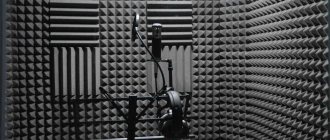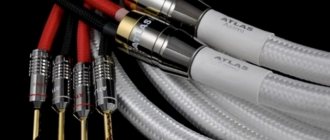Knowledge of sound theory and acoustics is often used in production and at home. The need for them arises among people whose professional activities involve dubbing video materials or listening to musical compositions. Sailors, pilots, geologists, vocalists, conductors - this is not a complete list of specialists who are required to understand the patterns of formation and transmission of sound signals.
The theory of sound and acoustics is often used in everyday life.
Physical theory of acoustics
This branch of science studies the features of sound phenomena in liquids, gases and solids using mathematical methods.
Substantiating the relationship between sound and the environment, it allows you to explore objects in the surrounding world using sound signal generators.
What is sound
In a broad sense, this is a physical phenomenon that occurs when particles of air, solid or liquid media vibrate. In this case, the propagated elastic waves are perceived by the senses of living organisms.
The vibrating body can be a person’s vocal cords, a speaker membrane, or the strings of a musical instrument.
In a narrow sense, sound is the subjective sensation of the impact of a sound wave on the ear. A person hears in the range from 16 to 20 kHz. Vibrations above and below these limits give rise to ultra- and infrasounds. They are out of earshot.
The dynamic membrane propagates elastic waves.
What is acoustics
This is the branch of physics that studies how sound waves are generated, propagated, received, and processed. The same term denotes both the system of sound reproducing equipment and the audibility in the room.
Knowledge of physical acoustics is used in technology, art, and in the study of the earth's interior.
Electroacoustics is associated with sound information processing devices.
Hydroacoustics studies sound processes in bodies of water.
In medicine, accumulated information from the field of acoustics is used to carry out diagnostic and therapeutic procedures.
In architecture, the scientific discipline in question helps to create structures with special sound conditions (for example, religious temples, concert halls).
Acoustics is the study of how sound is generated and propagated.
Musical acoustics is a link between science and art, allowing you to competently use musical instruments and at the same time receive positive emotions and aesthetic sensations.
New areas of acoustic science are actively developing - acoustoelectronics, acousto-optics, synthesis and automatic speech recognition.
Newest Yamaha YSP-5600BL 7.1.2 Dolby Atmos Soundbar
Instead of going through all the hassle of setting up multiple speakers and complex wiring of a 7.1.2 Dolby Atmos Surround system, Yamaha has introduced a soundbar, the Yamaha YSP-5600BL 7.1.2-Channel Dolby Atmos MusicCast Sound Bar, that will replace all 9 speakers and amplifier, with a single front sound panel.
Soundbars are an easy-to-install surround sound system consisting of just two pieces of hardware, the soundbar itself and an optional subwoofer.
The amplifier is built into a long soundbar that is in the same position as the center speaker in a surround sound system. No complicated wiring required, simply connect the DVD, Blu-ray or STB audio output directly to the soundbar and you're ready to go.
Wave nature of sounds
It is based on the compaction of the molecules of a medium during the vibration of bodies in it.
It was first substantiated by the German scientist Hermann Helmholtz at the end of the 19th century.
What are sound waves
Due to oscillatory movements in various media, the pressure at a particular point periodically increases. It is transmitted to neighboring particles and further along the chain. As a result, there is an alternation of areas of high and low pressure, i.e., areas of compression and rarefaction. Every particle of the medium vibrates in them.
Sound waves are produced as a result of oscillatory movements.
A continuous oscillation surface forms a front with several types of signals.
Plane waves
If the dimensions of the front are several times greater than the sound wavelength, then the latter is called flat. It can spread over a long distance from its source.
Spherical waves
In cases where the sound source is point-like and its dimensions are much smaller than the length of the emitted signals, their spherical variety is considered.
Properties of harmonic waves
In response to a harmonic influence, a response occurs - a harmonic wave. It varies according to the law of sine or cosine and spreads linearly.
Sound vibrations of this type are characterized by:
- Volume. With a high vibration amplitude, the sound is loud, with a low amplitude, the sound is quiet.
- Height. It depends on the oscillation frequency. For example, when singing with a bass, the vocal cords vibrate slowly, while a soprano vibrates several times faster.
A harmonic wave propagates linearly.
Characteristics of longitudinal and transverse waves
The differences are presented in the table:
| Characteristics | Place of origin | Directions of particle vibration and advancement | Spread speed | Polarization ability |
| Longitudinal | Liquids and gases | Match | Big | No |
| Transverse | Solids | Perpendicular | Less | Eat |
Absorption of sound waves
Propagating in space, sound vibrations reduce their intensity and the sound weakens. It is absorbed. The main reason for this is the conversion of sound energy into heat.
Slow down absorption:
- low atmospheric pressure (for example, at high altitudes);
- reduced viscosity and thermal conductivity of the material.
High mountains absorb sound waves.
Decay is accelerated by:
- solids;
- high sound frequency;
- elevated ambient temperature.
Reflection and transmission of sound through an obstacle
Sound signals are able to avoid obstacles (see the property of diffraction).
If the size of the obstacle exceeds the wavelength, the sound is reflected or attenuated. It is not heard from behind the object.
For small objects, the signal diverges in all directions.
At the boundary of 2 environments (air and solid) it can:
- reflect from the surface;
- do not change the direction of movement;
- refract and move into another medium (see the phenomenon of refraction).
Sound may pass through an obstacle and not change direction.
Both direct and reflected signals enter a limited room: the first go from the source to the receiver (ear), the second first reach the reflective surface, then are sent to the auditory organ, thereby lengthening the trajectory of movement.
The number of reflections, their relative strength and frequency distribution influence the acoustic properties of a room.
Dolby Atmos 7.1.4 surround sound system
The new Dolby Atmos home audio system can be standard 5.1 or 7.1 surround sound systems with the addition of 2 or 4 overhead speakers. If a 5.1 surround speaker system uses 2 height speakers, it becomes a Dolby Atmos 5.1.2 surround speaker system, and if 4 height speakers are used, it becomes a Dolby Atmos 5.1.4 surround speaker system. Likewise, by using 2 or 4 height speakers in a surround sound system, a 7.1 surround sound system becomes a Dolby Atmos 7.1.2 or 7.1.4 surround sound system.
Speed of sound in physical theory
The speed with which elastic waves propagate in any medium was first theoretically calculated by Newton. The figure obtained in the calculations turned out to be underestimated, since the scientist considered the process in an isothermal system.
Laplace managed to obtain the correct value at the end of the 18th century.
The speed of sound is affected by:
- Elasticity of the medium. This value, in turn, depends on the type of deformation of the solid body (compression, torsion, bending), so the speed of sounds during such processes will also differ.
- Density of matter. The lower it is, the faster sound vibrations move through it, and vice versa.
Standing waves
If 2 waves with the same amplitude, phase and frequency move in opposite directions, then when they meet they form 1 standing wave. At this point, alternating sections of amplitude maxima (addition zones or “antinodes”) and minima (subtraction zones or nodes) appear.
Sounds that move in opposite directions form a standing wave.
In such a signal, the energy does not change, since it is transferred in equal amounts forward and backward.
The phenomenon under consideration affects the acoustic perception of the playing of musical instruments: at the nodes the bass is almost inaudible, at the “antinodes” it sounds very rich.
In string
A stretched musical string generates transverse vibrations, and itself loses its original position.
The oscillating one vibrates with its fixed ends and produces a fundamental tone. It consists of a combination of standing waves. Their nodes are located at fixed ends.
In addition, vibrations in the string occur in several places. In this case, the string appears to be divided into equal parts. Each of them also vibrates to form its own signals and produces additional tones of smaller amplitude.
The human ear perceives the entire set of generated sounds, but consciousness does not differentiate them and passes them off as a single holistic sound.
In wind instruments
The theory of sound in a string is applicable to a wind musical instrument. The latter can be simplified to represent a straight pipe in which standing waves are formed. At the open end there is an “antinode”, at the closed end there is a node.
Wind instruments use sound theory.
ACOUSTICS
ACOUSTICS (from the Greek ἀϰουστιϰός - auditory), a field of physics and technology that studies elastic (sound) vibrations and waves in various types. environments, their stimulation and perception, distribution, interaction with the environment, as well as various applications.
A. is one of the most ancient areas of knowledge. It arose as a doctrine of audible sound perceived by the human ear. Acoustic phenomena - the voices of people and animals, the noise of the wind and sea, thunder, etc. - belong to the first natures. processes that people are interested in. They began to create art. sources of sound, empirically establish the features of its radiation and propagation, which were used in the production of music. tools and in the construction of public buildings (temples, theaters). Thus, Pythagoras (6th century BC) discovered a connection between the pitch of sound and the length of a string or pipe; Aristotle (4th century BC) established that the propagation of sound is accompanied by compression and rarefaction of air, and the echo is caused by the reflection of sound from obstacles. Leonardo da Vinci (15th–16th centuries) studied the reflection of sound and formulated the independence of the propagation of sound waves from different sources.
The formation of A. as a physical person. science began in the 17th century. from studying the system of music. tones and their sources, measuring the speed of sound propagation (G. Galileo, M. Mersenne). Over the next two centuries, acoustics developed as a branch of mechanics: on the basis of Newton’s laws of mechanics, Hooke’s law of elasticity, and Huygens’ principle for wave motion (see Huygens–Fresnel principle), the theory of radiation and propagation of acoustics was created. waves in the medium, measurement methods were developed, the foundations for the analysis and synthesis of sound were laid (I. Newton, T. Jung, P. Laplace, O. Fresnel, L. Euler, D. Bernoulli, G. Helmholtz). Classic The stage of development of acoustics was summarized by J. W. Rayleigh in his work “The Theory of Sound” (1877–78).
K con. 19 – beginning 20th centuries refers to a new stage in the development of A. It is associated with the discovery of the possibility of transforming acoustic. signals to electromagnetic and vice versa. The impetus for this was the invention of sound recording (T. A. Edison), telephone and microphone (A. G. Bell and others). The new direction in audiology, associated at the initial stage with the development of radio engineering and radio broadcasting, stimulated the rapid development of both applied and fundamental science. A., increasing and transforming the arsenal of experiments used in it. funds. The use of acoustics has expanded immeasurably. methods in various fields of science and technology.
Modern Audio is an area of human activity associated with science, technology and culture, and sound is important as the basis for people’s means of communication. The region of frequencies considered in A. is wider than the auditory range - sound itself (conventional boundaries 16 Hz - 20 kHz): below lies the region of infrasound (0-20 Hz), above - ultrasound (20 kHz - 109 Hz) and hypersound (109 Hz - 1013 Hz), and quantum effects can already appear in the hypersonic region. According to these ranges, research methods in acoustics and the areas being studied are subdivided (for example, infrasonic frequency waves are used to study the long-range propagation of sound in the ocean, ultra- and hypersonic waves are used in flaw detection and solid-state physics).
One of the main A.'s tasks are to obtain, with the help of elastic waves, information about the properties and structure of the material medium and the interfaces between media by studying the nature of wave propagation. The main problems also include the problems of studying acoustics. effects on physical, chemical. and other processes in a substance with the aim of purposefully changing its properties. The most important thing remains to clarify all the mechanisms of acoustics. communication in order to create optimal conditions for it.
The general laws of radiation, propagation and reception of sound waves are studied by the theory of sound, which requires the use of the latest mathematics. methods and calculates. means (this direction is sometimes called mathematical mathematics). Along with the general wave approach, the theory also uses the concept of sound rays to consider problems of sound propagation with a wavelength that is small compared to the scale of obstacles (see Wave Acoustics) (see Geometric Acoustics). In relation to diff. models of media, wave propagation and adequate methods for considering acoustics. fields, such subsections of the theory of sound were formed as statistical acoustics, acoustics of moving media, crystal acoustics, etc. An important section of theoretical. A. is nonlinear acoustics, associated with noticeable changes in the properties of the medium during the passage of acoustic waves. waves The development of nonlinear acoustics is due, in particular, to the emergence of high-power sound sources.
It is most closely connected with other regions of modern times. physics physical acoustics, which studies the characteristics of the propagation of elastic waves in real matter, as well as the study of the interaction of ultrasonic and hypersonic waves with matter and physical. fields, in particular acoustoelectronic, acousto-optical, phonon-phonon, phonon-photonic and other interactions. Subsections of physical acoustics are molecular acoustics and quantum acoustics. Phys. A. is closely intertwined with related fields of science and technology - electronics (acoustoelectronics), optics (acousto-optics, optoacoustics).
Acoustic propagation waves in natural environments - the atmosphere, the waters of the World Ocean, the earth's crust - and related phenomena are studied in atmospheric acoustics, hydroacoustics, ocean acoustics, and geoacoustics. Acoustic waves serve to probe these environments. Hydroacoustics is of particular importance, since sound is the only type of radiation that spreads across the earth. distances in the aquatic environment. An important and widely developed applied area is associated with hydroacoustics - sonar.
Electroacoustics studies the processes of acoustic transformation. signals to electrical and vice versa. On its basis, an extensive applied field arose - audio engineering, which deals with the development of equipment for transmitting, recording, and playing acoustic music. waves in the audible range. Electroacoustics is connected with all other areas of acoustics, since equipment for a variety of different types of acoustics is based on its principles. measurements. Fundam also deals with electroacoustics. electromechanical research and electroacoustic transformations in matter, closely connecting here with physical. acoustics.
Applied areas of architecture—architectural acoustics and building acoustics—study the propagation of sound in societies. premises (halls, auditoriums) and contribute to the creation of optimal conditions for the perception of speech and music, as well as ensuring sound insulation of residential and industrial premises. Modern principles of construction and application of new builds. materials complicate tasks and stimulate the development of these applied sciences. New methods and measuring instruments are also used in research on musical acoustics, where famous muses are added to the arsenal. New instruments were also included - electromusical ones.
A special place in acoustics is occupied by the study of acoustic noise, an important factor in the impact of the environment on humans. At the same time, sounds of natural origin (the noise of a mountain river, rain, the rustle of a forest, etc.) have a beneficial effect, and intense noise of industrial origin (transport, machines and mechanisms that produce loud sounds) can negatively affect people’s health, leading to loss of life. hearing and other diseases. Under modern level of industrialization, noise becomes one of the components of environmental protection. pollution. A.'s tasks include the development of scientific research. methods and technical means for identifying sources of noise and reducing its level both by eliminating (if possible) the sources themselves and by creating means of protection against it. International standards for permissible noise of machines and mechanisms, and over time they become more and more stringent.
A separate direction of A. is associated with research and miscellaneous. applications of ultrasound - in physics. experiment, hydroacoustics, industry, transport, medicine, etc. Ultrasonic devices are used in acoustic monitoring, ultrasound diagnostics, acoustic microscopy, sound imaging, and sonar. Using ultrasound, you can anneal parts, weld plastics, drill holes in fragile materials, change the speed and nature of chemical reactions. processes, etc.
Bioacoustics deals with the distribution of acoustics. waves in living tissues, the impact of these waves on biological. objects and biological tissues, studying the mechanisms of sound production, acoustic perception. waves of animals. Physiological acoustics and psychological acoustics study the organs and processes of sound perception and sound emission in humans. Problems of speech production, transmission and perception of speech are considered in speech acoustics. The results of these studies are used in sound engineering, architecture. acoustics, in the development of speech transmission systems, in information and communication theory, in music, physiology, medicine, etc.
Along with these traditions. areas of research in modern times. A. new directions and sections appear. Thus, interest in the interaction of acoustic fields with aerodynamic and heat flows and the generation of sound in these flows led to the intensive development of aeroacoustics and thermoacoustics. From ser. 20th century study of thermoacoustic hesitation has become almost focus in connection with the need to clarify the processes in the combustion chambers of rocket engines. Practical The processes of thermoacoustic and reverse acoustothermal transformations are also significant, in particular in connection with the possibility of creating acoustic refrigerators. In the 2nd half. 20th century Radiation acoustics arose, which developed at the junction of acoustics, nuclear physics, high-energy physics, and elementary particles.
New aspects of considering experiments. facts also arise in the ocean ocean, which makes it possible to use some observed phenomena for assessments and predictions of global processes (for example, warming of the Earth's climate).
The phenomenon of resonance - what is it?
The phenomenon of resonance was first described by Galileo in 1602.
If the oscillatory system is periodically influenced from the outside, then the frequency of its stationary oscillations may coincide with the frequency of external ones. At this moment, resonance occurs - the amplitude of natural oscillations increases sharply.
This phenomenon is taken into account when creating sound devices, in particular musical instruments. The violin, guitar, and piano have resonators, which serve as the body of the instrument.
The string has a fundamental resonant frequency. If you tighten it more, reduce its thickness and length, the resonant frequency will increase.
A pinch of your fingers or a blow of a hammer will cause the string to vibrate at all frequencies. Oscillations that do not coincide with resonant ones will soon die out.
5.1 or 7.1 surround sound systems for home theater
5.1 and 7.1 surround sound systems have multiple speakers strategically placed around you as you view the projector screen. This illustration shows the locations of a 5.1 surround sound system with a projector. For 7.1 surround sound, 2 additional speakers will be placed behind the viewer.
Dolby Atmos surround sound will require additional speakers above the viewer, or require dedicated upward-firing front speakers. This picture shows a TV, but it is the same for projectors, so let's assume the TV in the picture is a projector screen. The center speaker should be located under the projector screen.
Speaker placement in a 5.1 surround sound system
Frequency spectrum of sound and Fourier analysis
In life, sounds of the same frequency are rare. Complex sound signals are more common. They are divided into parts - overtones and harmonics.
Fourier analysis examines complex audio signals.
The sound decomposition method was called Fourier analysis, because it was first used by the French mathematician Fourier in the 18th century.
To decompose an audio signal, graphs are drawn that show the dependence of energy on frequency, and thus represent its frequency spectrum.
Main spectrum types:
- Discrete. It is formed by separate frequency lines separated by empty spaces.
- Continuous. All frequencies are represented within the band of this spectrum.
If sound vibrations do not obey the harmonic law, a person perceives them as a complex signal with its own timbre. It contains vibrations of different frequencies and amplitudes.
The fundamental tone determines the sound in pitch, and the overtones give a specific color (timbre).
Each instrument has different overtones, so the sounds are also different.
Sound pulse spectrum
A sound wave can be decomposed into individual harmonic vibrations. Their combination forms a spectrum.
The spectral composition of tones is represented on the coordinate plane: the frequency is plotted on the abscissa axis, and the amplitude corresponding to the intensity of the harmonic is plotted on the ordinate axis. Based on the resulting graph, the type of spectrum is determined.
The spectrum of a sound pulse decomposes the wave into vibrations.
The following have a linear spectrum:
- pure tones;
- signals having a periodic form;
- sound effects obtained by adding periodic waves.
Musical signals are close to the linear spectrum.
A continuous spectrum is characteristic of noise and fading sounds.
The combined sound spectrum has:
- technical devices in which the rotation of the motor imposes additional frequency components on the continuous spectrum;
- keyboard instruments, when the blows of hammers in them acquire a noise color;
- human speech with an abundance of vowel sounds close to musical ones.
What is Dolby Atmos sound system?
The Dolby Atmos sound system is similar to a 5.1 or 7.1 surround sound system with the addition of overhead speakers to deliver sound from above. It creates a 3D sound effect and no words can describe the fantastic sound effects.
Dolby introduced Dolby Atmos Sound in 2012 and the first film recorded in this new Atmos surround sound was Brave. The first movie theater to feature Dolby Atmos Surround is in Hollywood at the Dolby Theatre, famous home of the annual Academy Awards ceremony.
Dolby Atmos sound is what the latest big-budget Hollywood films are recorded in. If you've seen movies with Dolby Atmos sound, then you know what we're talking about. This sound technology is at the very top level. And nothing comes close to this yet.
We can now experience this fantastic Dolby Atmos surround sound in our home theaters at home. The cost of installing a Dolby Atmos surround sound system is not that high. The video below demonstrates what Dolby Atmos surround sound is and also explains how you can convert existing 5.1 and 7.1 surround sound systems to Dolby Atmos sound.
Read: How and which TV is better to choose and buy: Everything you need to know
Well-known audio companies such as Denon, Marantz, Onkyo, Pioneer and Yamaha have many new Dolby Atmos audio systems, either standalone Dolby Atmos receivers or as a Dolby Atmos home theater system with a receiver and all the necessary speakers.
Periodic sound vibrations
Sounds are considered periodic when the oscillatory process is not constant and occurs repeatedly and repeatedly, after a certain interval of time.
Periodic oscillations occur at intervals of time.
The spectrum of periodic oscillations is always discrete. It can be decomposed by frequency into individual harmonics.
Musical sounds are an example of periodic oscillations.
Simple explanation of additional terms
For those who are just learning the basics of acoustic science, a simplified version of the description of acoustic phenomena and terms is provided.
Noise
This is a relative concept, because it refers to any unwanted sound. Noise becomes a random collection of tones of various characteristics. In it, individual signals are not interconnected and arise chaotically.
For one person, sound carries useful and pleasant information, for another it is extremely unpleasant.
You can enjoy loud sound, but also experience discomfort from listening to it.
There are types of noise based on the nature of the sound:
- constant;
- fluctuating (continuously changing);
- intermittent (with uniform step intervals);
- pulsed (with uneven sound intervals).
Noise refers to any unwanted sounds.
Noise is distinguished by spectrum:
- broadband (with a spectrum larger than an octave);
- tonal (with different levels in adjacent bands).
Noise sources:
- vehicles;
- production equipment;
- sound-reproducing mechanisms in production and at home.
Noise is classified according to levels:
| Noise level, dB | Description of the noise | Example |
| 25–26 | Barely distinguishable | Night in the village without wind |
| 30 | Well heard | Night in a city apartment |
| 40–59 | Does not disturb comfort | Everyday life |
| 60–75 | Causes discomfort | Loud TV |
| 78–119 | Super loud | Busy highway |
| 120–180 | Dangerous | High power explosion |
Sound intensity
Sound waves carry energy. Its flow passes through a section of space per unit time. This flow determines the intensity of sound.
The intensity of sound passes through an area of space.
The ear is sensitive to a wide range of sound. Human speech is perceived best.
Decibel
Sound intensity is usually measured in decibels (dB). This is a logarithmic quantity, named after the Scotsman Bell, who studied the nature of sounds.
The lower level of sensitivity of the human ear is 0 dB, the upper is 120, which also corresponds to the pain threshold.
Volume
This is a subjective perception of sound intensity, which depends on pressure, spectrum and duration of exposure.
Loudness is one of the characteristics of musical tone.
The sensation of loudness depends on:
- vibration amplitudes;
- their frequencies;
- age.
Loudness is the perception of sound intensity.
The harder the musicians hit the guitar strings, the greater the amplitude of their vibrations. If a sounding body produces vibrations of increased amplitude, then it increases in the sound wave. Thus, the volume of the signal depends on the vibration energy. The first quantity grows in an arithmetic progression, the second – in a geometric progression.
This pattern gives a person the opportunity to hear both very quiet and super loud sounds.
The audibility zone is 16–20 kHz, but signals in the range from 1 to 5 thousand Hz are better felt. As you approach the frequency boundaries, audibility decreases.
With age, the limits of perceived frequencies narrow, and therefore loud stimuli cause discomfort in older people.
Sound diffraction
The ability of a sound signal to deviate from its original trajectory is called diffraction.
The results of this phenomenon are the penetration of sound behind a massive obstacle and the ability to pass through cracks or tiny holes.
Diffraction does not obey the laws of reflection and refraction. Thanks to it, the sound dissipates.
Diffraction is the ability of sound to deviate from its original path.
Physicists explain this effect using the Huygens–Fresnel principle. They consider each point of the field as an independent source of spherical waves, capable of bending around surrounding objects.
How soundbars work
Soundbars are next-generation sound systems that are very compact and easy to install, replacing complex amplifiers and multi-speakers configured for projectors and televisions. The panels work on the principle of projected sound, which is reflected from walls, furniture and other surfaces for high-quality sound. This has the virtual effect of sound coming from all directions to achieve 5.1 and 7.1 surround sound effects with a single front-facing soundbar.
Projector with soundbar gives a big picture with great sound
Soundbars have many focused speakers that send out focused sound beams much like light beams and these focused sound beams bounce off the walls around you giving the same effect as 5 surround sound speakers in a 5.1 speaker system.
Read: What is Dolby Vision technology on TV?
Soundbars have many small directional speakers that direct sound beams in different directions, reflecting off appropriate surfaces such as walls. The Yamaha Soundbar has an automatic system to calibrate and direct the sound beam in the correct directions for the room in which it is being set up.
Yamaha Japan revolutionized sound systems for projectors and TVs with the release of Soundbars. Yamaha still makes the best soundbar for projectors and it is clear that they are more expensive than competing brands.
Refraction of sound
In an inhomogeneous medium, sound vibrations can change direction towards the layer, where the speed is lower. This property is called refraction. It can be observed in the atmosphere, the thickness of the earth, and in the waters of the World Ocean.
Temperature
Refraction in the atmosphere depends on air temperature and the presence of wind.
At an altitude of 10–15 km from the earth's surface, the air temperature is very low, and the speed of sound is also low. Signals from an earthly source in the upper atmosphere are bent upward and are no longer heard on the ground. A zone of silence is formed.
At night, a temperature inversion sometimes occurs, in which layers of the atmosphere heat up at an altitude of more than 20 km from the ground. The opposite phenomenon occurs: the sound turns downward and is reflected repeatedly from the surface of the earth or water. A zone of anomalous audibility is formed, which is larger in area than the zone of silence.
Refraction in the atmosphere depends on the wind.
Under the water
Refraction in the water column is due to:
- its salinity;
- temperature;
- pressure.
Horizontal refractive power is weaker than vertical, and manifests itself at very large distances, as well as in contact zones of cold and warm currents, around icebergs.
Vertical refraction focuses sounds from the deep ocean near its surface.
Absorption due to internal friction and thermal conductivity
As sound waves travel, their intensity decreases. Moreover, part of the acoustic energy is dissipated in any environment.
Known reasons for sound absorption:
- internal friction;
- intermolecular interaction;
- heat exchange.
Intermolecular interaction is the cause of sound absorption.
The intensity of absorption depends on:
- signal frequency;
- pressure;
- ambient temperature.
When a sound pulse passes between particles of the medium, friction occurs. In liquids and gases it is called viscosity. Thanks to it, acoustic waves lose energy, which is irreversibly converted into heat.
Sound absorption is facilitated by heat loss. The gas in the compression phase heats up, and part of the thermal energy leaves the medium.
A formula has been derived according to which signal absorption increases in proportion to the square of the frequency. Therefore, high-frequency sounds are absorbed faster than low-frequency sounds.
Musical acoustics
Mathematical models of sound systems were known back in Ancient Greece and China. Modern scientists have deepened and used the acquired knowledge to create electric musical instruments.
Knowledge of sound was used to create musical instruments.
Today, musical signals and their characteristics, the sound mechanisms of instruments form the subject of the study of musical acoustics. The pitch, timbre and dynamics of sounds in this interdisciplinary science are considered from the point of view of their effect on hearing and reproduction by performing musicians.
A researcher in this area will benefit from knowledge of mathematics, physiology, medicine and psychology.
Sounds
Musical sounds are periodic, repeating at set intervals, and consist of harmonics.
Their sources are the vibrating strings of instruments and air columns.
How 5.1 home theater speakers work
Different speakers in a surround sound system have different functions:
Center speaker in 5.1 surround sound system
Conversation audio is output from a center speaker located just below the projector screen. It gives you a sense of what the people on screen are actually saying. It is important that the center speaker of a 5.1 or 7.1 surround sound system is the best quality you can afford because these front center speakers are where all the conversation voices come from, so good quality speakers are needed to make them sound clear.
Front left and right surround speakers in 5.1 speaker system
These speakers output sounds that come from the left and right sides of the television picture. Let's look at the example of a car moving from left to right on a television scene.
Read: Projector or TV: Which is better to choose for your home?
The sound is higher from the left center speaker when the car only enters the image from the left side. When the car moves towards the center of the screen, the sound from the front left speaker decreases, the sound from the front center speaker becomes maximum, and when the car reaches the right side of the screen, the sound from the front right speaker increases.
A car will pass through the TV screen in a couple of seconds if it is moving slowly, or will rush through the screen in a split second if it is moving quickly. Regardless of the car's speed, the speakers are synchronized with the car's movement and you get a very realistic sound of the car appearing on the screen.
Rear speakers left and right in 5.1 sound system
The rear left and right speakers in a 5.1 or 7.1 surround sound system are turned on when projector scenes require sound from behind or from all directions. Examples of scenes where all the speakers are combined, for example, when it is raining heavily, you will feel like you are caught in the rain. The rear speakers also join the scene when, for example, a plane flies overhead. You must experience a quality surround sound system to truly enjoy today's HDTV movies.
Read: Home theater projector: How to choose and which one is better to buy?
Subwoofer in 5.1 sound system
The subwoofer is the sixth speaker in a 5.1 surround sound system. The job of a subwoofer is to output all low frequency sounds such as explosions, heavy drums, very deep bass sound of talking, etc. Since human ears cannot detect the direction from which low frequency sound is coming, a subwoofer can be placed anywhere in the room.
What causes the sound of different musical instruments
The principles of sound extraction are the same for all instruments, but the resulting melodies are different.
The sound of the instrument is determined by the presence of:
- vibrating elements (strings or air columns);
- the mechanism of influence on them (the musician’s fingers, the violin bow, etc.);
- resonator for communication with the surrounding air.
Most musical instruments do not produce sound of one frequency: overtones and harmonics additionally arise. If there are no harmonics in the generated signals, no melodies are formed. In this case, devices (for example, drums, timpani) are used to emphasize the rhythm.
Stringed instruments
The guitarist's fingers or the violinist's bow set the strings in motion. The sound waves from their vibrations transfer energy to the body of the instrument. The latter also begins to vibrate, and the human ear perceives the musical signal.
The violinist's bow creates the movement of the strings.
Its quality is affected by:
- The material from which the body of the instrument is made. Thus, domras are made from white maple, acoustic guitars are made from Lebanese cedar, electric guitars are made from plastic or plexiglass.
- Tool shape and configuration. These are characteristics that have been invented and perfected over centuries. They cannot be explained by acoustic science.
- Length and diameter of strings. The thinner the string, the higher the sound.
Keyboards
A grand piano and an upright piano have the same sound mechanism: strings are stretched onto a frame, and a resonating body, keys and pedals are located around them. When the keys are pressed, wooden hammers strike the strings. Their vibration creates sound.
Each note has its own string tuned.
The timbre of the tone is rich and uniform for the following reasons:
- Due to the massive soundboard, the range of formants is very wide.
- Most harmonics occur at lower frequencies.
- Hitting a strictly designated point on the string with a hammer suppresses harmonics that are discordant with the fundamental frequency.
When you press the keys, the hammers strike the strings.
Wind instruments
Sound extraction methods:
- Air vibrations in a cylindrical pipe with a sharp edge of the resonator.
- Vibrations of the flexible surface of the tongue.
In the first case, the air flow comes out of the gap and is broken by a sharp wedge-shaped obstacle. On opposite sides of the wedge, vortices are formed - “edge tones”. They excite air columns in the flute and organ. In this case, the fundamental frequency of the generated harmonics is inversely related to the length of the pipe.
In the second, a flexible tongue (reed) oscillates in the air flow. When air passes through the gap, the reed is drawn into it and closes the hole. If there is no flow, it returns back and the process repeats. This is how the clarinet, saxophone, and oboe work.
Friday format: A selection of unusual acoustics
Save and read later -
Back in the 50s of the last century, it was considered prestigious if the speaker system was hidden from the eyes of listeners or fit as organically as possible into the interior. For this reason, people sometimes came up with original solutions for placing equipment.
One High Fidelity reader, after consulting with his wife, decided to “hide” the stereo system in the oven: “All the necessary equipment fit in there; True, it looked very strange.” A 1955 article in Popular Mechanic suggested a similar economical design. The main idea is to place the Hi-Fi system on the clothes dryer.
The passion for unusual and, at times, provocative solutions has reached our times. Even today, audio manufacturers put speakers in interesting housings. For example, Triple C's designers have drawn inspiration from nature throughout the brand's existence. For this reason, BluBOOM speakers are designed in the shape of half a coconut (pictured above).
In 2003, Ferguson Hill developed an interesting speaker model - FHOO1. These are dipole speakers with a huge transparent horn. The entire structure takes up an indecent amount of space and costs about $20,000.
Another large and very strange speaker comes from the pen of Israeli designer Shmuel Linsky. The speakers are made of concrete, and each of them weighs 56 kg. In addition to concrete speakers, the designer also produced a concrete coffee machine and a concrete canoe. It’s not entirely clear what the use of a concrete canoe is, but the speakers can really be used for their intended purpose.
The designer claims that when listening to music through this model, you can achieve a state of nirvana. At the top of the speaker there is a small loudspeaker, from which comes a long 96-centimeter channel, which ultimately turns into a subwoofer.
The following speakers, unlike the previous ones, are much more compact and do not take up so much space, so they can fit on a bookshelf, TV stand or in the kitchen. Designed by Joakim Axelsson, Soundragon speakers are designed in the shape of a dragon, so lovers of oriental culture will love them. The speakers are made by hand in Sweden from polyethylene resin.
The following speakers from audio industry titans Bowers and Wilkins are notable for their controversial designs. The top-end Nautilus audio system is shaped like a clam shell. The material from which the speakers are made is carbon fiber reinforced plastic.
Formula 1 cars are made from the same plastic. After five years of research and experimentation with the shape of the speakers, the engineers achieved the sound they were striving for. The price for such speakers is exorbitant - $90,000, but, according to B&W engineers, you will not find better sound.
It's pun time again. Woofer are 2 speakers that look like dogs [“woof” is translated from English as “bark, growl”, and “woofer” is translated as “loudspeaker” - approx. ed.]. “Audiops” are made of plastic and cost about $1000. In this case, it is difficult to talk about the sound quality, because there is nothing outstanding here, however, if you decide to purchase this “miracle”, then, let’s say, you will have two new best friends.
And for those who are allergic to animals, but want to make a couple of new friends, we recommend paying attention to Munny Speakers. The speakers are built into vinyl dolls. A distinctive feature of these particular speakers is the creative approach to their creation. You can “upgrade” them yourself. There are a huge variety of models of these dolls - they are all different colors, and sometimes with additional accessories: handles, caps, etc.
For those who cannot live without Apple technology and do not part with their iPod headphones even for a second, a more serious gadget may be suitable. These are still the same headphones, only enlarged several times and turned into bookshelf speakers. There's nothing remarkable about them other than their size - unless there's a safety manual that says "don't try to put these headphones in your ear."
Movie buffs and fans of the Star Wars saga will love the Star Wars TIE Fighter speakers, designed in the shape of two space fighters. And if the subwoofer was made in the shape of the Death Star, it would elegantly emphasize the style of the entire audio system.
The concept of compact and simple speakers was presented by Polish designers Witek Stefaniak and Anielka Zdanowicz. In addition to the fact that speakers can perform their main function - playing sound, they can store books or discs. Quite an interesting solution that combines compactness and functionality.
I would also like to mention the Lewis Hyman speakers, which will become a good decorative element. Lewis Hyman is a speaker shelf that is compatible with any Bluetooth device. Now the bookshelf can read books to you on its own.
Those who like compactness and unobtrusive design will like speakers from JBL - Control Now. Each column represents a quarter of a circle. If desired, they can be connected in pairs, or even close the circle and make the column a desktop one.
Thanks to its ergonomics, the speaker easily fits into the space of the room - it can be mounted between two walls, between a wall and a ceiling, or placed on a shelf. This speaker costs $250, and for $280 you can buy a “street” version.
But the speakers are from the “Stone Age”: the AWR-650-SM can and should be used outdoors. They will fit well into any garden, because their structure is very similar to natural stone. The speakers are weather-resistant, so rain won't bother them.
If it is not possible to use speakers in the garden, but you really want to see the plants, you should try JVC Sound Garden modular speakers. The speaker concept was developed by Japanese designers and presented at Tokyo Design Week.
The speakers themselves are made of eco-plastic and can be connected together to form an entire system. At the top of each “module” there is a small pot where you can plant bonsai or other small plants.
In conclusion, it is worth saying: of course, this selection of columns - from fantastically expensive to simply entertaining - is intended, first of all, to amuse our readers. Still, for most music lovers, speakers are part of a vital ecosystem that is designed to fit into a variety of interiors.
That is why, when creating Arslab technology, for example, engineers adhere to the classical approach to designing cabinets. And when developing Penaudio speakers (also classic shapes), they pay attention not only to the external design, but also to the tactile sensations that arise when touching the speaker: we will talk about this and much more in one of the next episodes of the “Sound” podcast.
This article has been read 10,366 times.
The article is included in the sections:
Interesting things about sound











